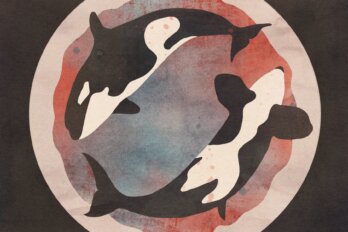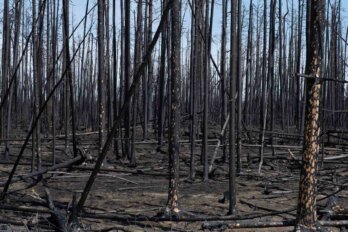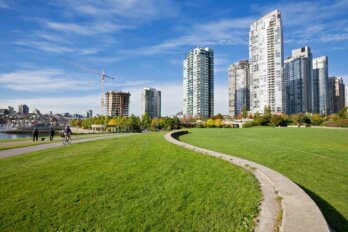In northeastern Kenya, some 400 kilometres from a pristine coastline and a short drive from the porous border with Somalia, is an empty community. The homes have been torn down, the market abandoned. An old tea shop is barricaded with branches of prickly mesquite, known locally as mathenge. There’s a rustling of tarpaulins strapped to rickety stalls, where fruit-and-vegetable sellers or those with used clothing ran their shops. Old plastic bottles have turned a deep grey from months of dust and dirt. Herders and their cattle occasionally pass through—some of the few visitors since this site officially closed, last spring.
Listen to an audio version of this story
For more audio from The Walrus, subscribe to AMI-audio podcasts on iTunes.
Behind the former market, there are subtle memories of the camp that once held more than 60,000 people. Most of its makeshift dwellings are now lines etched in the sand or, in some cases, stony ledges where residents who could afford it constructed more stable shelters. Here and there are the remnants of piles of garbage that were set on fire. The flames seem to have spared some items: a single plastic shoe, a reusable shopping bag, a piece of fabric marked “unhcr,” a small T-shirt.
This was once Ifo 2, a camp within the Dadaab refugee complex—one of the largest in the world, sheltering nearly half a million people at its peak population. Ifo, the first camp in Dadaab, which was named for a nearby town, opened in 1991, when civil war broke out in neighbouring Somalia. For much of that decade, rival clans jostled for power and resources in a country whose borders were carved from a former British protectorate and an Italian colony. The fighting disrupted farming and animal herding, leaving many without enough food. It displaced some residents internally while others fled to neighbouring countries. Many of those who crossed the border into Kenya have stayed in Dadaab camps for decades, with children and grandchildren born there.
But it isn’t simply war that many are running from. Ifo 2 opened, in 2011, to accommodate an influx of people displaced because of a prolonged and merciless dry season that killed their cattle and vegetation and evaporated water sources. It forced tens of thousands of pastoralists—the preferred local term for herders—across the border. This drought was later one of the first in the world to be partially linked to anthropogenic, or human-caused, climate change; those who fled it may be considered one of the first waves of climate migrants in modern history. And, as many of their experiences—and Ifo 2’s recent closure—suggest, much of the world isn’t yet ready for them.
Moga Hassan Ahmed has been forced to flee his home twice. A pastoralist who herded cattle, he first left Somalia as the war broke out in 1991. He crossed the border into Kenya and registered with the United Nations High Commissioner for Refugees (unhcr), receiving food and supplies to build a house. He’s now spent decades in a country not his own. Somalia is slowly recovering from war, but instability remains. Though a federal government took power in 2012, it has struggled to maintain control in the face of al-Shabaab, a militant Islamist group that rose in the mid-2000s and made significant territorial advances in the region.
Around 2011, Ahmed began thinking about returning to his hometown. He had separated from his wife, whom he’d met in Dadaab. After going hungry during a period when the unhcr struggled to provide refugees with enough rations, one of their sons hanged himself from a tree. Another son has gone back to Somalia, and Ahmed says he “could be at risk,” a subtle way of implying that his son may have joined al-Shabaab. The pain of those losses was part of why, in 2016, Ahmed decided to accept the unhcr’s offer of repatriation. In return for leaving Dadaab—and, in his case, giving up his refugee status—Ahmed would receive several hundred dollars from the unhcr and assistance returning to his home region. By the agency’s standards, the areas near Kismayo, the southern port city Ahmed first relocated to, were considered secure: Somali and Kenyan military forces had regained control of much of the area by then.
But, though the region Ahmed had fled nearly two decades earlier was now more politically stable, he soon realized he couldn’t see a future there. The land was dry, and he learned his thirty cattle, which had been looked after in Somalia while he was in Kenya, had all died from heat and starvation. He lasted about a month before moving to Dhobley, a town along the Somalia-Kenya border. The situation there was the same. “I really loved my country, and I thought my country had improved in terms of security,” he told me in an interview late last August. “When I went back there, it was with a heart of patriotism.” But, as animals died and people starved, he had no choice but to return to Dadaab.
Somalia’s 2011 drought was part of a pattern of extreme weather events, says Abubakr Salih Babiker, a climate scientist with the igad Climate Prediction and Application Centre (icpac)—part of a trade block of eight East African countries, including Somalia and Kenya. Babiker says there’s a link between rising temperatures in the western section of the Indian Ocean, which is warming at a faster rate than any other part of the tropical ocean system, and unusually harsh events in East Africa, including prolonged dry periods followed by longer and heavier rainy seasons. Tropical cyclones—such as the two powerful ones that hit Mozambique last year, causing widespread flooding and destruction of homes—and the locust swarms threatening crops in the region this past spring are also linked. “There is a pattern here,” he says. “What used to be rare [is] not rare anymore.”
It took a few years after 2011 for three researchers from the United Kingdom to announce, in a report published in the journal Geophysical Research Letters, that the drought in East Africa could be attributed in part to climate change. It was an important addition to the scientific literature: until then, it had been difficult to prove a link between greenhouse gas emissions and these types of natural disasters, which have led to widespread displacement and exacerbated refugee crises. Without such evidence, governments can easily dismiss the population movement as temporary or seasonal: the disaster will pass, the refugee camps will close, the people can go home. As it becomes impossible to ignore how climate change is contributing to mass displacement, governments may be forced to grapple with the reality that the affected refugees within their borders, and the temporary camps that house them, may have to stay there permanently.
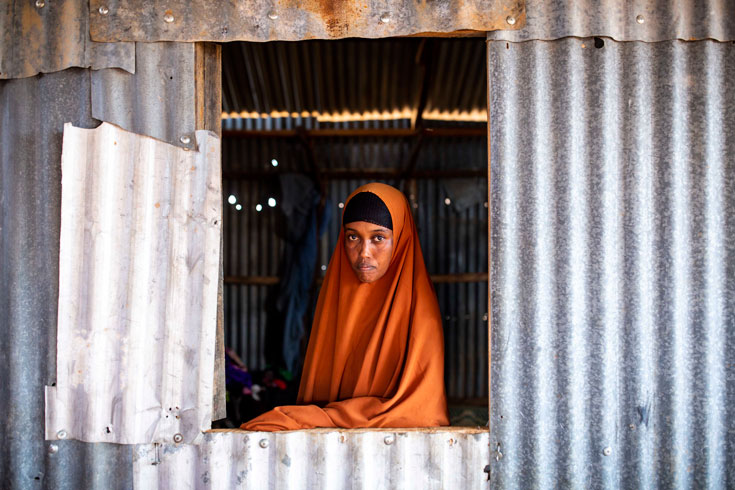
On the surface, at least, countries like Canada have considered the issue. A 2010 government report cited data suggesting that, by 2050, anywhere from 25 million to 1 billion people could be displaced by climate change. (A 2018 World Bank report looking at sub-Saharan Africa, South Asia, and Latin America estimated that number could exceed 140 million.) Canada is also a signatory to the 2010 Cancun Agreements, which, aside from committing countries to reducing greenhouse gas emissions, addressed the issue of displacement linked to climate change. Although the topic has come and gone in governmental discussions over the past decade, no policy changes have yet been implemented. And, as Canada and other developed countries are falling short of their targets for emissions reductions to mitigate climate change, some of the world’s most vulnerable are the first to feel the effects.
Ahmed is in his mid-sixties now, and frail. He walks slowly, often supported by the arm of a young neighbour. In his left eye, a cloudy white coats the brown iris and the pupil. He says it’s his return to Somalia and the drought that made him almost blind. He’s sleeping in his nephews’ old house, on a woven mat on the ground. Having given up his refugee status, he isn’t eligible to work. Ahmed usually eats one meal a day, if he’s lucky, when his family and friends can offer something small to spare. Here in the camp, at least, he has some support.
But there’s no guarantee that support will remain. For years, Kenya has said it will shut down Dadaab, citing security risks and blaming refugees for inciting terrorist attacks and engaging in criminal activities. Last year, the government announced plans for Dadaab’s full closure, and though Ifo 2 has been shuttered, the three remaining camps continue to operate for now. New arrivals are no longer registered there, which is why Ahmed and others who have returned to the camp are not recognized as refugees. A Human Rights Watch report last March urged the Kenyan government to abandon its renewed push to close Dadaab. It cited a leaked UN document in which the government had urged the unhcr to “expedite relocation of the refugees and asylum-seekers residing therein.” The same Human Rights Watch report says the unhcr responded by offering up options, some of which it had been pursuing for a few years: voluntary repatriation to places where it’s safe to return, relocating refugees to other camps in Kenya, integrating refugees with Kenyan family links, and resettling some of those refugees outside Kenya’s borders.
In some cases, people displaced across international borders may end up living in an essentially stateless limbo, as Ahmed does—unable to return home and unable to establish new roots. Some of their home countries are considered safe according to a system designed long before climate change began making parts of the world, some of which have seen thousands of years of human civilization, uninhabitable.
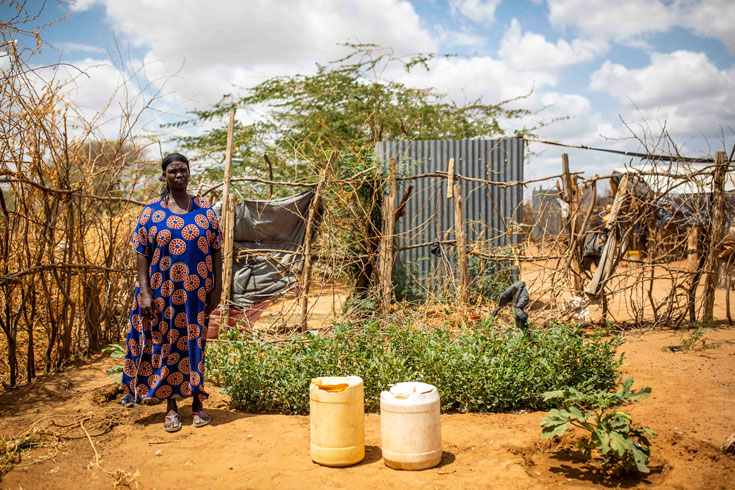
Dadaab is a salient example of how climate change is complicating an already stretched system of support for refugees. It’s difficult to attribute cases of displacement solely to climate change: in some cases, as in Somalia, climate change is exacerbating conflicts that are already sending thousands of people across international borders; it can also contribute to fights over land and resources that could lead to more waves of refugees. In the Lake Chad region of central Africa, climate change is drying up the main water source, where people would traditionally migrate during the dry season. Those people are forced farther afield, sometimes into neighbouring countries, where conflict can arise over access to land. In Somaliland, a self-declared independent state north of Somalia, droughts are transforming once livable land into barren areas. In parts of the Pacific Ocean, islands are flooded by rising sea waters, making it difficult to farm. In each of these cases, those being displaced wouldn’t meet the formal criteria to be categorized as refugees. As a result, they are not only denied support but are often unable to claim asylum—make a legal request to be considered a refugee—outside their own country.
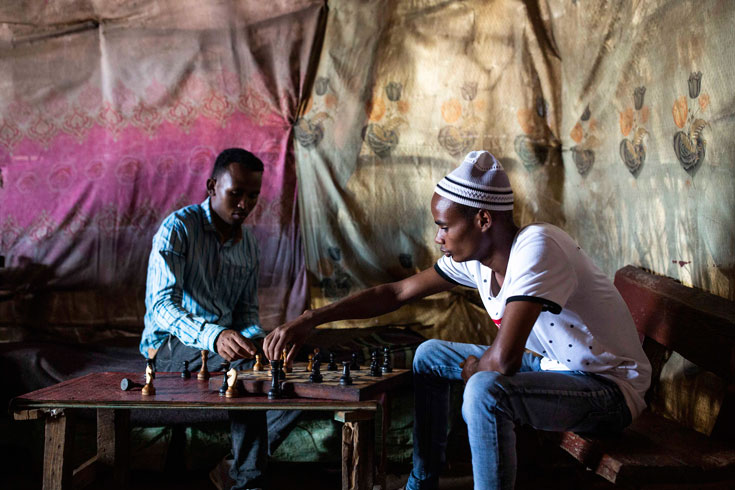
Their legal plight boils down to the scope of the term refugee. The word was first formally defined in the 1951 Convention Relating to the Status of Refugees. It comes from the French réfugié, to seek refuge or a safe place, and stems from a period in the sixteenth and seventeenth centuries when French Protestants fled persecution in the country, many moving to England. Drafted in the wake of mass displacement following the Second World War, the UN treaty identifies refugees as people fleeing conflict or persecution in their home countries due to their race, religion, nationality, political beliefs, or membership in a social group. (The convention also prohibits anyone from expelling refugees to territories where their lives or freedoms would be threatened.) The convention was initially designed to protect mainly Europeans who had faced persecution during the Second World War, and it referred specifically to those displaced before January 1, 1951. Nearly two decades later, the 1967 Protocol Relating to the Status of Refugees expanded that definition to serve displaced people around the world in the midst of several new refugee crises, including those resulting from war in Vietnam and Algeria.
The terms of the convention have remained unchanged since. This means refugee status doesn’t extend to situations where climate change has played a role in displacing residents—which is why the UN challenges the term “climate refugee,” referring instead to climate or environmental migrants. For those who do cross international borders, the burden rests on the asylum claimant to prove their case and build a defence that identifies the ways in which they might face future persecution. And, if they’ve been displaced by events linked to climate change, it can be a hard case to build because their circumstances aren’t recognized in the legal refugee criteria. Their challenges are even greater if they don’t speak the language of their host country or lack literacy skills.
Some experts contend it’s time to change the thinking around climate displacement. “These climate-related shocks and humanitarian crises are intimately linked,” says Alvin Munyasia, food-security and climate-justice lead at the Oxfam Pan Africa Programme. The growing crisis of climate displacement, he says, “is a consequence of a deeply unequal, unjust, and unsustainable global system.” The communities most vulnerable to climate change effects, he says, are also those with the lowest carbon footprints. Yet, even as some of the world’s greatest emitters, including Canada, pledge to address their contributions to climate change, none have yet taken significant action to support those displaced by it.
It may be time to rework the refugee system entirely. A 2014 report by the Canadian Centre for Policy Alternatives advocated for, along with admissions targets and integration programs, the creation of a new immigration class for climate migrants. Both Australia and New Zealand have considered such policies to address an influx of refugee claimants from Pacific islands being affected by flooding and loss of fertile lands. Neither country has yet committed to them. This past January, the UN Human Rights Committee issued a landmark ruling in the case of Ioane Teitiota, who sought asylum in New Zealand on the basis that his home country of Kiribati, a Pacific island nation, is under threat from rising sea levels. The ruling said that, when considering deportations, governments must take into account potential threats posed by climate change in asylum seekers’ home countries. But it stops short of expanding the formal definition of refugee to include those endangered by the effects of climate change.
Janet Dench, the executive director of the Canadian Council for Refugees, cautions against attempts to revisit that definition. She and other advocates fear doing so would risk ending up with an even narrower set of criteria than those set out by the 1951 convention. But there are other ways for those displaced by forces other than persecution to be accepted within national legislation.


